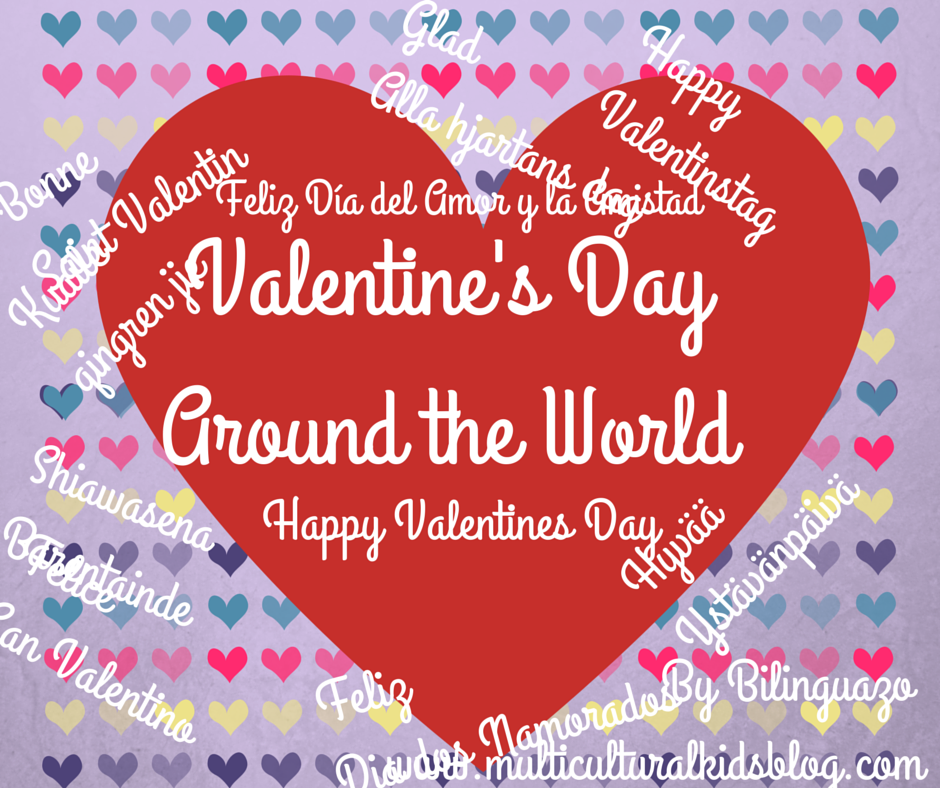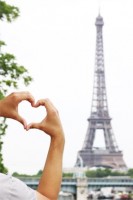BE MINE
RVO Staff Writer
 Heart-shaped boxes of creamy chocolates, bouquets of roses, and lovey-dovey cards are some of the ways lovers celebrate Valentine’s Day here in the U.S. And February 14th isn’t just a happy day for lovers. In a survey published last month by the Retail Advertising and Marketing Association, companies producing Valentine candy, cards, flowers and novelties are swooning like teenage sweethearts because Valentine’s Day generates more than $13 Billion in revenue.
Heart-shaped boxes of creamy chocolates, bouquets of roses, and lovey-dovey cards are some of the ways lovers celebrate Valentine’s Day here in the U.S. And February 14th isn’t just a happy day for lovers. In a survey published last month by the Retail Advertising and Marketing Association, companies producing Valentine candy, cards, flowers and novelties are swooning like teenage sweethearts because Valentine’s Day generates more than $13 Billion in revenue.
That’s a whole lotta love!
 Okay, so we all know people in the U.S. throw down some serious dough on Valentine’s Day, but how do people in other countries celebrate? What are their customs, traditions?
Here’s a peek.
FRANCE
 It’s been said the first Valentine’s Day card originated in France in the 1400s when Charles, Duke of Orleans, sent love letters to his wife while he was imprisoned in the Tower of London.
It’s been said the first Valentine’s Day card originated in France in the 1400s when Charles, Duke of Orleans, sent love letters to his wife while he was imprisoned in the Tower of London.
Back in the day, the French followed the tradition “une loterie d’amour†(drawing for love) that matched lovers by the sound of their voice. Single men and women would enter houses facing each other and take turns calling out to one another until they were paired off. If the men didn’t like their match, they left the woman for another man to call. As part of the tradition, the women that didn’t get matched up, got together afterward for a big ceremonial bonfire where they tossed pictures and objects of the men who rejected them, and cursed their names. French officials banned the tradition when the women got too rowdy and out of control. Today, the French take their lovers out for some fine French cuisine and champagne, and it’s the most popular day for men to get down on that bended knee and propose.
ITALY
Celebrating Valentine’s Day more as a spring festival, centuries ago Italian lovers gathered in gardens and parks for poetry readings and long strolls. Today, Italians prefer romantic dinners and exchanging gifts. Also, the Italians have a tradition of giving chocolate to their lovers and the bigger the chocolates, the stronger the bond.
CANADA
To celebrate Valentine’s Day, Canadians throughout the country organize balls and parties where people express love for their spouses and sweethearts. Roses, chocolates, candies and cards are the most popular gifts. Canadian kids exchange gifts with their friends and just like in the U.S. in many schools, children enjoy classroom parties where they put all the Valentines in a decorated box to be distributed to other kids in class.
BRAZIL
Since Brazil’s Carnival usually takes place in February it overlaps with Valentine’s Day, and the city adds that extra hint of love to its big party day. The local equivalent to Valentine’s Day is “Dia dos enamorados†(Lovers Day) which is June 12. On this day, Brazilians exchange chocolates, flowers, and cards and musical performances are held throughout the country. Brazilians also celebrate “Saint Anthony’s Day,†which commemorates the patron saint of marriage. On this day, single Brazilians looking for a husband or wife perform certain rituals to increase their chances of meeting their soul-mate.
SOUTH AFRICA
Valentine’s Day is huge in South Africa. Shopkeepers adorn their shops with fragrant flowers, and love symbols like cupid, love birds, and hearts. The country’s most typical tradition includes taking your valentine out on the town or to one of South Africa’s beautiful beaches. Young women celebrate Valentine’s Day by following ‘Lupercalia’ where she pins her lover’s name on her sleeve. Some men also follow this custom.
TAIWAN
The Taiwanese celebrate Valentine’s Day on February 14 and again on July 7; both dates are equally important. Men like to purchase beautiful bouquets of roses for their sweethearts, and according to tradition, the color and number of roses is significant. One red rose signifies ‘my only love’, 11 roses ‘my favorite’, 99 roses ‘forever’ and 108 roses means ‘marry me.’
JAPAN
Japanese men are the ones courted on Valentine’s Day with lots of delicious chocolate. This custom of gifting chocolate on February 14 was first introduced in 1936 by a Kobe-based confectioner ‘Morozoff Ltd’. The company ran the first ever Valentine’s Day ad in Japan in a local English newspaper that attracted foreigners who celebrated Valentine’s Day. By the 1950’s other Japanese chocolate manufacturers joined in, and in the 1970s, Japanese people began giving Valentine’s chocolates that expressed the nature of their relationship. A woman would gift ‘giri-choko’ which means ‘obligation chocolate’ to men she was not interested in romantically like her boss and colleagues. ‘ChÅ-giri choko’ which means “ultra-obligatory†is chocolate given to people the woman may not even like, but feels obligated to give something. ‘Honmei-choko’ which means ‘favorite or true feeling chocolate’ is gifted to boyfriends, lovers or husbands. And for an extra show of love, a woman will give ‘honmei-choko’ or home-made chocolate. A more recent type of chocolate has popped up, the ‘tomo-choko’ which means ‘friend’ and is gifted to a woman’s female friends.
DENMARK
The Danes celebrate Valentine’s Day with ‘Gaekkebrev’ which are funny little poems or rhyming love notes that men send to women anonymously, giving them only one clue to the sender’s identity: the number of letters in the sender’s name represented by a dot for each letter. The recipient must then guess who sent her the card. If she guesses correctly she wins an Easter egg on Easter and if she’s stumped, she owes her admirer an Easter egg.
ESTONIA
More a celebration of friendship than romantic love, Valentine’s Day in Estonia is called ‘Sõbrapäev’ which means ‘Friend’s Day’ where people exchange cards and gifts and greet each other with “Happy Friends Dayâ€. That doesn’t mean romance isn’t in the air. February 14 is still the most popular day for marriage proposals.
WALES
On Valentine’s Day, it is customary for the Welsh to give love-spoons, an old tradition that began when Welsh men (possibly sailors) carved intricate designs into wooden spoons and presented them to the women they wanted to date or marry. The designs they carved on the spoon’s handles were also symbolic: a key would signify a man’s heart, a wheel his hard work and beads represented the number of kids he wanted. This tradition is still carried out today.
ENGLAND
In the 1700s, on the night before Valentine’s Day single women pinned five bay leaves to each corner of their pillows and one in the center hoping they would conjure dreams of their future husbands. Another variation of this tradition was to sprinkle bay leaves and rose water and lay them across their pillows saying “Good Valentine, be kind to me; in dreams let me my true love see.†Now considered folklore, this tradition is rarely practiced. In parts of England, the character ‘Jack Valentine’ also known as Old Father Valentine or even Old Mother Valentine, is a lovable and mysterious character who knocks on children’s doors on the night before Valentine’s Day and leaves treats and presents under their pillows.
SCOTLAND
In Scotland, Valentine’s Day is celebrated with a festival where unmarried men and women write their names on paper which is folded and placed into a hat: one hat for women; one for men. The women draw a name and vice versa and the two are then matched. Women then pin the name of their partner over their hearts or on their sleeves. A dance often follows and, at the end of the festival, it is not unusual for marriages to take place. According to another Scottish custom, the first young man or woman encountered by chance on the street – or anywhere – will become that person’s valentine.
 Happy Valentine’s Day!
